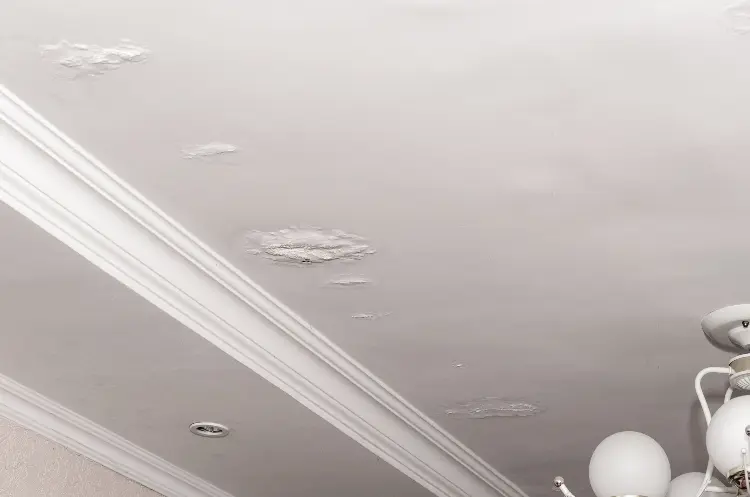Discovering a soft spot in your ceiling drywall can be alarming, but understanding the causes and solutions is crucial. In this comprehensive guide, we’ll delve into the intricacies of “Soft Spot In Ceiling Drywall,” empowering you with knowledge to address this issue promptly and effectively.

Understanding Soft Spots in Ceiling Drywall
Soft spots in ceiling drywall can manifest for various reasons, ranging from water damage to structural issues. Recognizing the signs early on is key to preventing further damage and costly repairs. Let’s explore the common causes and solutions.
- Water Damage: Water is a common culprit behind soft spots in ceiling drywall. Leaky roofs, plumbing issues, or even condensation can lead to water seeping into the drywall, causing it to soften and weaken. Look for discoloration, sagging, or a mushy feel when pressing on the affected area.
- Roof Leaks: A damaged roof can allow water to penetrate and compromise your ceiling drywall. Check for missing shingles, damaged flashing, or visible signs of water entry in the attic. Addressing roof leaks promptly is essential to prevent extensive damage to the drywall and other structural components.
- Plumbing Leaks: Leaky pipes or plumbing fixtures located above the ceiling can lead to soft spots. Conduct a thorough inspection of your plumbing system, paying attention to any signs of water stains, dripping, or dampness. Addressing plumbing issues early can mitigate damage to the drywall.
- Condensation Issues: Excessive moisture in the air can lead to condensation on ceilings, especially in humid climates. Over time, this moisture can be absorbed by the drywall, causing soft spots. Improve ventilation in affected areas and consider using dehumidifiers to control moisture levels.
Addressing Soft Spots: Soft Spot In Ceiling Drywall
- Locate and Fix the Source: Before repairing the drywall, identify and resolve the underlying issue causing the soft spot. This may involve fixing roof leaks, repairing plumbing, or addressing ventilation problems. Ensure that the root cause is thoroughly addressed to prevent future soft spots.
- Cut Out and Replace Damaged Drywall: Once the source of the issue is resolved, carefully cut out the damaged drywall. Use a utility knife to create a clean edge, ensuring that the replacement piece will fit seamlessly. Install a new piece of drywall, securing it with screws or nails, and finish with joint compound and paint.
- Reinforce Structural Integrity: If the soft spot is indicative of more significant structural issues, consult with a professional. Reinforcing the structural integrity of your ceiling may be necessary to prevent future occurrences of soft spots.
Preventive Measures:
- Regular Inspections: Conduct regular inspections of your roof, plumbing, and ceilings. Look for early signs of water damage, such as stains, discoloration, or softness in the drywall. Prompt detection can prevent extensive damage.
- Maintain Proper Ventilation: Ensure adequate ventilation in your home to minimize condensation. Use exhaust fans in kitchens and bathrooms, and consider installing ventilation systems in attics to reduce humidity.
Conclusion: Protecting Your Home from Soft Spots
In conclusion, identifying and addressing a soft spot in your ceiling drywall is crucial for maintaining the structural integrity of your home. By understanding the common causes and taking preventive measures, you can protect your home from potential water damage and structural issues. Stay vigilant, conduct regular inspections, and address any signs of soft spots promptly to ensure a safe and well-maintained living space.